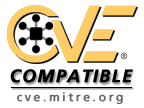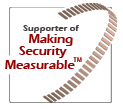Unquoted Search Path or Element |
| Weakness ID: 428 (Weakness Base) | Status: Draft |
Description Summary
Extended Description
If a malicious individual has access to the file system, it is possible to elevate privileges by inserting such a file as "C:\Program.exe" to be run by a privileged program making use of WinExec.
Languages
All
Operating Systems
Windows 2000: (Sometimes)
Windows XP: (Sometimes)
Windows Vista: (Sometimes)
Mac OS X: (Rarely)
Platform Notes
This weakness could apply to any OS that supports spaces in filenames, especially any OS that make it easy for a user to insert spaces into filenames or folders, such as Windows. While spaces are technically supported in Unix, the practice is generally avoided. .
Example 1
| Reference | Description |
|---|---|
| CVE-2005-1185 | Small handful of others. Program doesn't quote the "C:\Program Files\" path when calling a program to be executed - or any other path with a directory or file whose name contains a space - so attacker can put a malicious program.exe into C:. |
| CVE-2005-2938 | CreateProcess() and CreateProcessAsUser() can be misused by applications to allow "program.exe" style attacks in C: |
| CVE-2000-1128 | Applies to "Common Files" folder, with a malicious common.exe, instead of "Program Files"/program.exe. |
Software should quote the input data that can be potentially executed on a system. |
Phase: Architecture and Design Assume all input is malicious. Use a standard input validation mechanism to validate all input for length, type, syntax, and business rules before accepting the data to be displayed or stored. Use an "accept known good" validation strategy. Input (specifically, unexpected CRLFs) that is not appropriate should not be processed into HTTP headers. |
Do not rely exclusively on blacklist validation to detect malicious input or to encode output. There are too many variants to encode a character; you're likely to miss some variants. |
Inputs should be decoded and canonicalized to the application's current internal representation before being validated. Make sure that your application does not decode the same input twice. Such errors could be used to bypass whitelist schemes by introducing dangerous inputs after they have been checked. |
| Nature | Type | ID | Name | View(s) this relationship pertains to |
|---|---|---|---|---|
| ChildOf |  Category Category | 417 | Channel and Path Errors | Development Concepts (primary)699 |
| ChildOf |  Weakness Class Weakness Class | 668 | Exposure of Resource to Wrong Sphere | Research Concepts (primary)1000 |
| Mapped Taxonomy Name | Node ID | Fit | Mapped Node Name |
|---|---|---|---|
| PLOVER | Unquoted Search Path or Element |
| CAPEC-ID | Attack Pattern Name | (CAPEC Version: 1.4) |
|---|---|---|
| 38 | Leveraging/Manipulating Configuration File Search Paths |
| This weakness primarily involves the lack of quoting, which is not explicitly stated as a part of CWE-116. CWE-116 also describes output in light of structured messages, but the generation of a filename or search path (as in this weakness) might not be considered a structured message. An additional complication is the relationship to control spheres. Unlike untrusted search path (CWE-426), which inherently involves control over the definition of a control sphere, this entry concerns a fixed control sphere in which some part of the sphere may be under attacker control. This is not a clean fit under CWE-668 or CWE-610, which suggests that the control sphere model needs enhancement or clarification. |
| Submissions | ||||
|---|---|---|---|---|
| Submission Date | Submitter | Organization | Source | |
| PLOVER | Externally Mined | |||
| Modifications | ||||
| Modification Date | Modifier | Organization | Source | |
| 2008-07-01 | Eric Dalci | Cigital | External | |
| updated Potential Mitigations, Time of Introduction | ||||
| 2008-09-08 | CWE Content Team | MITRE | Internal | |
| updated Relationships, Other Notes, Taxonomy Mappings | ||||
| 2009-07-27 | CWE Content Team | MITRE | Internal | |
| updated Applicable Platforms, Description, Maintenance Notes, Other Notes, Potential Mitigations, Relationships | ||||





